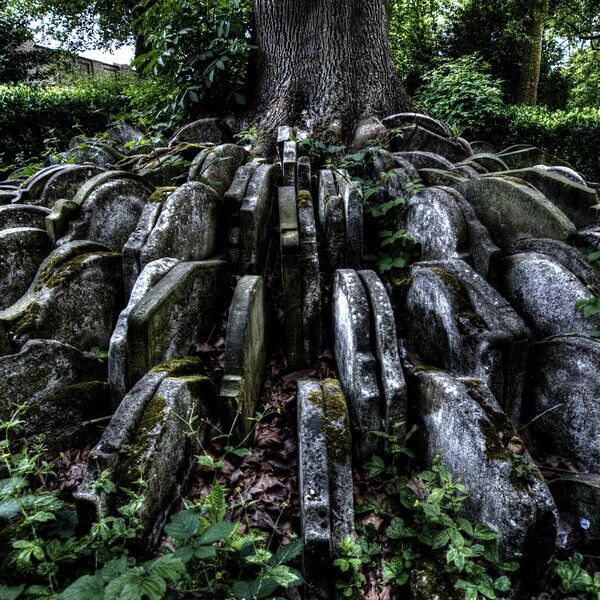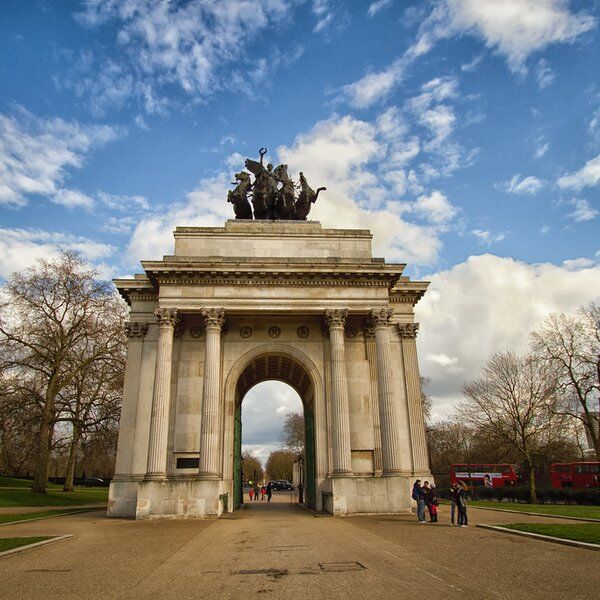What does it take to build a railway? Steel? Yes. Timber? Sure. A future novelist digging up a graveyard full of corpses? Sometimes.

The Pre-History Of The Hardy Tree
In the 1860s, Britain's railway system underwent a period of mass-expansion. Existing lines were extended and new ones built. One of the stations effected by this was London, St Pancras.
Unfortunately, one of the new lines was routed to go through the graveyard of the nearby Old St Pancras Church. This meant one thing.
Its corpses needed to be moved.

Enter Thomas Hardy
An architecture firm was hired to dig up and rebury the bodies. And who was their youngest and least significant member of staff? None other than Thomas Hardy, future writer of 'Far From The Madding Crowd.' The poor boy was given a pat on the back and sent off to exhume some graves.
How's that for hazing?
Once he'd completed this grimmest of tasks, he was left wondering what to do with the discarded headstones. Only one thing for it, he decided. I'll arrange them in a circular pattern around the base of an inconspicuous ash tree.
There is no official account as to why he made this choice, but I like to imagine it as a some kind of absurd f*** you to his bosses at the architecture firm.

The Hardy Tree
The tree has since become known as 'The Hardy Tree'. Over the years it has absorbed the headstones into its roots, transforming into a weird, gothic memorial to the exhumed dead of the industrial revolution.
One More Thing...
If The Hardy Tree didn't already make it gothic enough, Old St Pancras Burial Ground was also the second home of young Mary Shelley, and quite possibly an influence for her classic novel 'Frankenstein'. Find out more here.
Interested in finding more places like this? Try one of our Secret Walks in London - untangle cryptic clues as a team, as you are taken on a journey to the most unique, unusual and bizarre corners of London.












